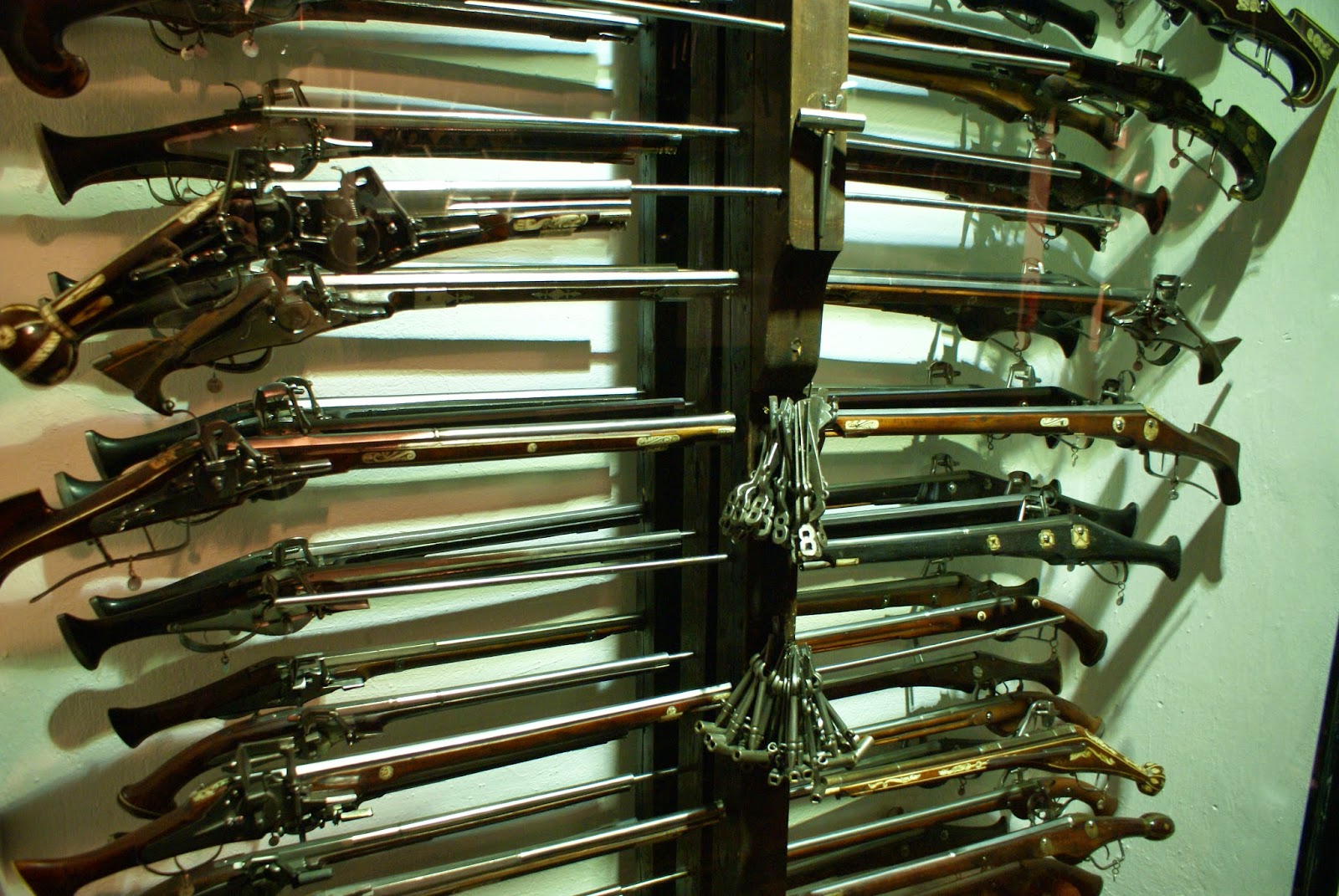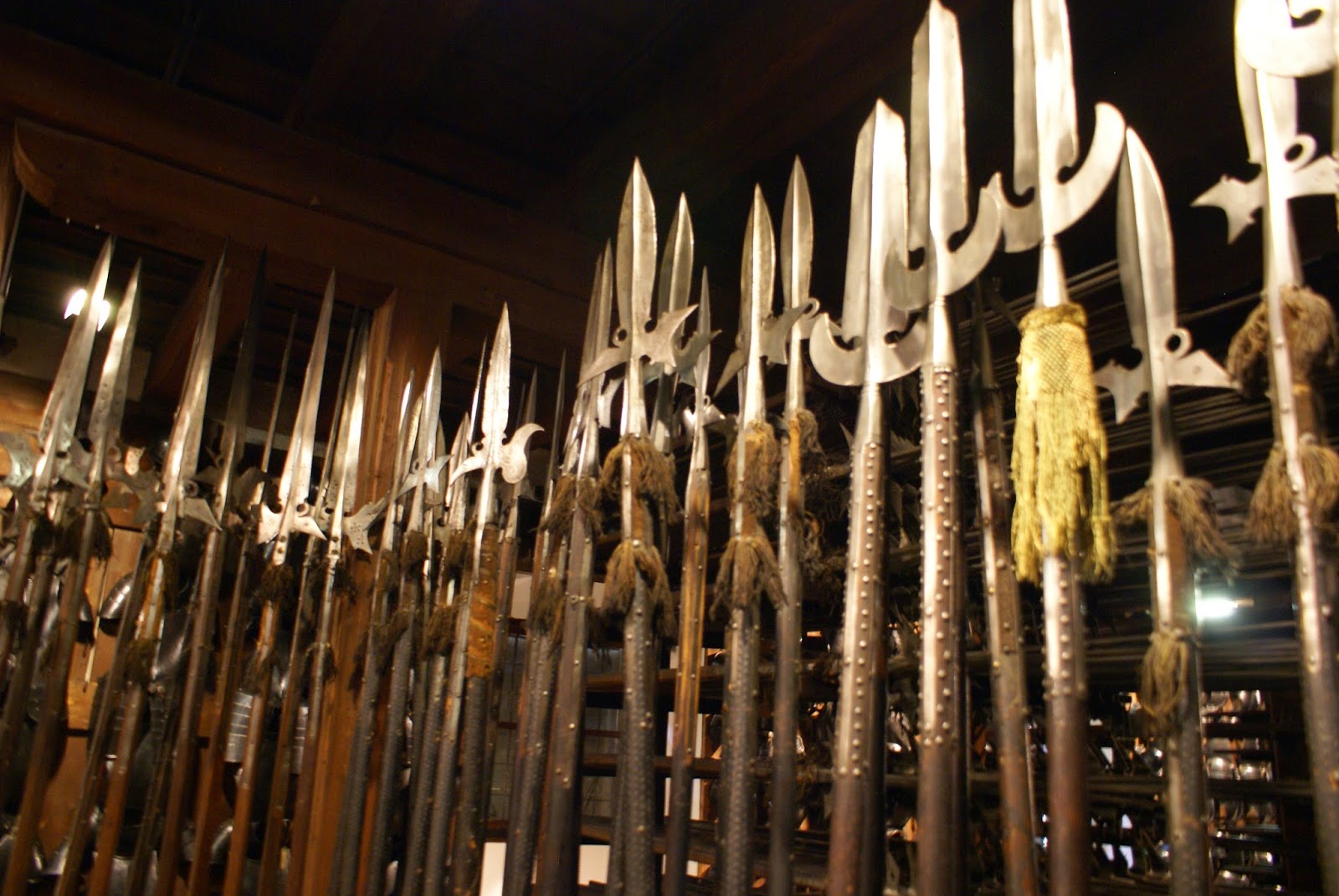View from the backyard:
On XXXXX we had planned on visiting the Kunstgarten; however, it had rained hard that morning and even though it was letting up, the rose bushes were full of water so that wouldn't have been particularly pleasant. Instead, we went in the Landeszeughaus, which contains a massive amount of weapons leftover from the Turkish wars.
Here's the front of the building. Note the wooden doors on the upper floors. In the event of a muster, weapons and armor would be lowered onto the street below.
Here's the heraldic animal of Styria, shooting fire out of all orifices. ALL orifices. I guess this was supposed to be intimidating.
Statue "The Unknown Knight".
The lobby for the Landeszeughaus also serves as the tourist information center, where we gathered while Volker bought tickets.
Das Landeszeughaus is the old city armory. They've made things a little more organized, but most of the stuff in the collection is pretty much how it was. There are lots of different types of rifles and pistols, and polearms, polearms, polearms.
The ceiling beams are lined with powder horns.
The audio guide was helpful in explaining what some objects were that remained a mystery last year. These things are some sort of signal device. By filling the barrel with gunpowder, the resulting explosion whacks the metal cover, creating a loud clang. This noise would alert the residents of the town that the enemy was approaching and the number of shots indicated how close they were.
Cannon and shot was sold by weight, which required a big scale.
Infantry armor. If you were taller or shorter than average, you were out of luck. I'm reminded of my grandfather's difficulty in finding shoes that fit in the army.
Pistols with bone inlay.
The hilt inlay on some of the pistols featured Adam and Eve and the snake.
Hand-held guns.
These are the fanciest suits of armor in the collection that would have been worn for tournaments or parade functions. Note that all of the breastplates give the wearer a potbelly. This was very fashionable at the time because abdominal fat indicated prosperity and wealth.
Unlike the standard sized infantry armor, these suits were custom made to fit the owner.
More engraved armor.
View of the courtyard.
Sabres.
They also have nice collection of two handed swords, which weren't original to the armory but are just interesting looking.
Extra blades.
Lots of pikes. The pike shafts have been cut down from their original 5 to 6 meter lengths.
All in all, a nice little outing on a rainy day.
Statues on the front of the Rathaus.



























































































No comments:
Post a Comment